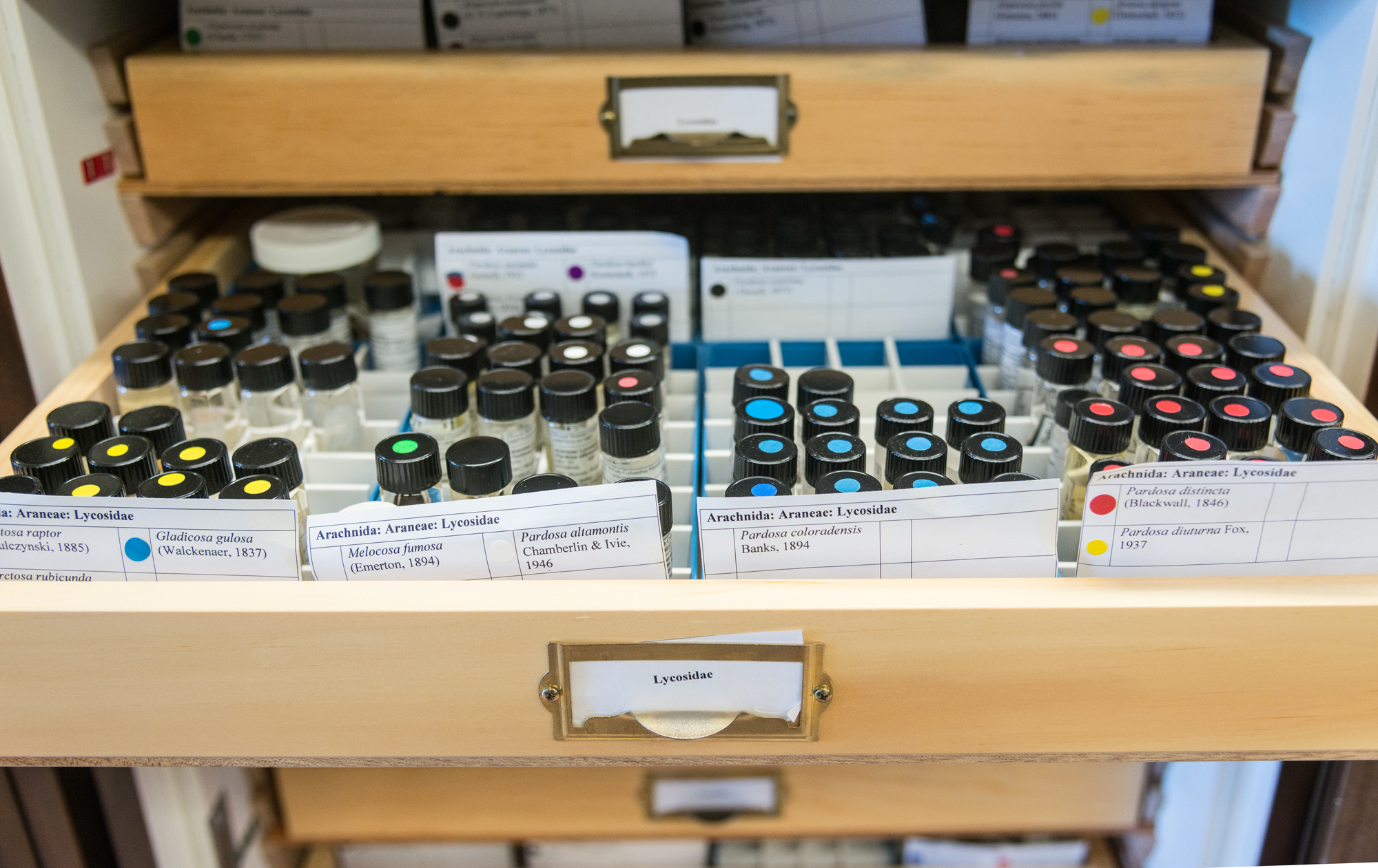Not So Scary
Claudia CopleyEntomology Collection Manager
Why did you want to become an entomologist (someone who studies insects)?
I was keen on insects from as early as I can remember, so becoming an entomologist was a natural fit. I always had jars with live insects in them and I am told I even insisted they be in my crib with me! Of course when I was little no one told me I could do what I loved and get paid for it, but that is exactly what has happened. My interests extend to everything biological, but my passion is for terrestrial arthropods—insects, spiders, and their relatives.
How did you become an entomology collections manager?
For schooling I have a undergraduate degree and a master’s degree in biology. In between I also did a high school teaching degree with an emphasis on math, general science, and biology. What I found out during my teaching experience was that not everyone loved nature and science as much as I do, so I came back to my true love: entomology.
I am still learning new things every day that relate to my career and interest in nature and am always on the lookout for courses where I can learn even more about the species that make up the huge field of entomology. On that note I have taken a course called The Bee Course, another course on bark beetles, and I am keeping my eye on the schedules of The Ant Course, The Hym Course, and others.
What does an entomology collections manager do?
My overall role is to make sure the entomology collection is available for research. There is still so much left to learn in entomology that the collection is in high demand for study. A typical day for me could include putting together a loan of specimens for shipment to researchers anywhere in the world, or a visiting researcher could come here and work directly in the collection. I spend most hours each week making sure the specimens are well curated: prepared properly (labelled, pinned, stored in preservative, etc.), that all the information about the specimen is captured digitally so we can search what is in the collection, putting things into the collection where they go, and making sure they are easily found when they need to be. I can only do all of this with the help of a big group of volunteers.
I also answer questions about all aspects of entomology every day and these questions come at me via email, phone calls, and some people even come right to the museum with critters in containers.
Something I don’t do every day but what I consider a critical part of the job is to add to the collection through fieldwork. It is amazing to spend even a short amount of time every year in natural areas all over the province.
Stories by or about this person
Entomology Collection Manager Claudia Copley dispels myths about spider danger in British Columbia.
Meet Entomology Collection Manager Claudia Copley and peek behind the scenes in entomology.
Credit: RBCM, J. Weller
Dr. Robb BennettResearch Associate
Why did you want to become a spider biologist?
Before I even started to crawl I was interested in animals and the natural world. This led to me study biology, especially entomology (the study of insects), as an undergraduate at university. Later, as a biology graduate student, I specialized in describing, naming, and classifying spiders (classic museum curatorial work!). Spiders attracted me because they do spectacularly interesting things in their day-to-day lives and are quite stunning to look at with a microscope.
How did you become a spider biologist?
Mentors were, and remain, very important in my development as a spider biologist. Most of my mentors were established professional spider biologists but I have also found mentors among my fellow students and even among some of the students whom I have taught and to whom I have been a mentor. Knowledge and inspiration do not always come from those with more experience.
What do you do as a research associate with the Royal BC Museum?
My fellow Royal BC Museum spider aficionados and I are documenting the many different types of spiders found in the province. Throughout the year, but especially in the summer months, we travel to interesting habitats around the province to collect spiders. During the fall, winter and early spring we focus on laboratory work identifying and cataloguing the thousands of mostly very tiny spiders that we have collected. The field work is always a great deal of fun (and always over too soon), but the lab work is hugely interesting and fun, too. Almost every day we identify spiders that have never been found before in British Columbia or Canada, or are entirely new to science.



